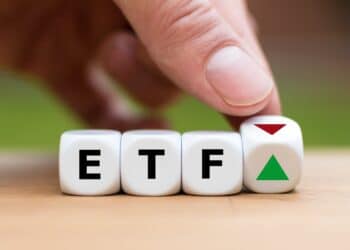For the past 12 months, a team of Australian Stock Exchange (ASX) executives has been involved in a clandestine operation to develop a system capable of providing a listed environment for managed funds.
There was certainly nothing sinister in the operation, but the group wanted to keep the details hushed so it could have the time to develop the system properly before it had to answer the questions of prying journalists.
In June, the ASX broke its silence on its plans to list managed funds in a similar manner to the way shares are listed. Last month, it released a white paper on what it calls the listed investment fund exchange (LIFE) outlining the way the system operates. The system is now operational and the ASX is in discussions with fund managers, including a number of the major players, with a view to listing funds in the near future.
But the ASX is also quick to stress that it is not setting out to dominate the industry. Head of the LIFE business at the ASX, Kris Vogelsong, says the system is just one distribution option for fund managers.
“This is not a solution for the entire industry,” he says. “We are not trying to narrow the scope but are seeking to provide an alternative for the industry.”
There are a number of parameters which will limit the number of funds listed under the LIFE system. For a start, the fund manager must have at least $500 million under management before the ASX will list the fund. The system is also prevented from listing funds in the superannuation environment, including allocated pensions.
Nevertheless, evidence for the success of listed managed funds overseas isn’t hard to find. In Holland, the majority of managed funds are available via the Amsterdam stock exchange. In the US, the QQQ (or Nasdaq 100) fund which tracks the Nasdaq index is the world’s most liquid stock. Not far behind it is the ‘grand-daddy of exchange traded funds (ETFs)’ — the SPDR fund, which tracks the S&P 500 index.
While the ASX has been keeping its LIFE plans under wraps, a number of managers have already listed managed funds, including BNP, State Street and Commonwealth Investment Management. All of these managers have called the funds ETFs, but most of them differ significantly from the ETFs which have grown dramatically in the US recently.
Head of the ETFs business at the ASX, Suzy Superina, says ETFs are just one type of listed managed funds. She says in the US, ETFs are a specific type of listed managed fund that generally follow an index and whose share holdings must be completely transparent to investors. They are generally used by institutional fund managers for short-term trading as a tool for portfolio construction.
Because these funds compete with futures contracts, their management fees are generally spectacularly low compared to managed funds in Australia. For instance, the SPDR has a management expense ratio (MER) of 12.45 basis points, while the QQQ has an MER of 18 basis points.
Fund managers can only offer these kinds of management fees because of the cost reductions related to listing on the stock exchange. Listed managed funds in the US offer MERs of between 10 and 50 basis points, about a quarter of the typical Australian managed fund.
Vogelson says one of the big listing attractions for fund managers is the opportunity to offer a lower cost alternative to a fund that is processed through their own systems. He says it currently costs fund managers an average of about $60 to settle an application or redemption. Settlement for funds listed on the ASX will cost fund managers less than $10.
But he says the primary attraction for fund managers is the added efficiency. The listed managed funds operations uses the CHESS and SEATS mechanisms used to trade all shares listed on the ASX. The system works on a T+3 basis, which means all trades are settled within three days. As most financial planners know, fund managers can take up to 30 days to settle trades, particularly when it involves redemptions.
Vogelson says the back-office systems used by some fund managers resembles “the banking industry in the 1950s” because of its reliance upon manual processing. He says the ASX uses a far more efficient electronic trading and settlement system.
Flexibility is also one of the key selling points to fund managers of listed funds. Not only can the system handle funds with a wide variety of asset classes including shares, fixed interest, property, derivatives and venture capital, but it can also use a variety of fee structures.
While most of the ETFs launched in Australia have come without commissions, Salomon Smith Barney’s product pays a 20 basis point commission to advisers who use the system. Vogelson says the market will decide the level of commission, the ASX only provides the means to apportion that commission.
But he also says the ASX has been very careful to ensure financial planners are involved in the development of the LIFE system. The group appointed a specialist financial planning manager earlier this year, Brett Baker, to build stronger relationships with advisers.
Baker says planners have embraced parts of the LIFE system, particularly the efficiency in which managed funds trades are settled.
“One of the main complaints I hear from planners is the time some fund managers take to settle managed funds transactions,” he says.
“More than 60 per cent of financial planners already deal in direct shares. This system uses the same distribution platform, so advisers feel pretty comfortable with the concept.”





